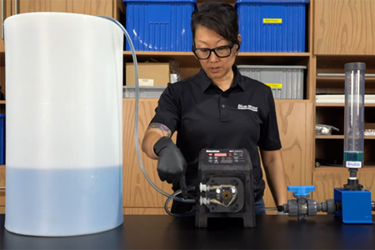Pump Calibration In Chemical Metering Applications

Accurate chemical dosing is vital for treatment performance, safety, and regulatory compliance in water and wastewater operations. While modern metering pumps are highly reliable, calibration at installation—and at regular intervals thereafter—is critical for ensuring precision. This article explains the importance of calibration and provides practical guidance on when and how to perform it. Key topics include initial calibration with actual process chemicals, recalibration after repairs or process changes, and the advantages of physical drawdown testing versus relying solely on flow meters. It also covers real-world factors that influence flow rates—such as viscosity, pipe length, and pressure—and highlights the need to calibrate at different flow conditions. Proper calibration prevents overdosing (and waste), mitigates safety risks, and supports troubleshooting and documentation efforts. For operators and engineers, consistent pump calibration is a small but essential step that ensures long-term reliability and optimal chemical feed performance.
Get unlimited access to:
Enter your credentials below to log in. Not yet a member of Water Online? Subscribe today.
